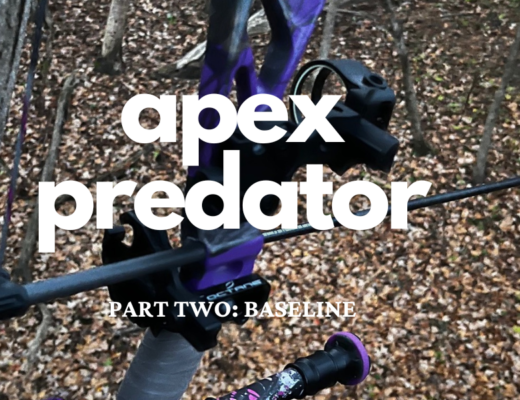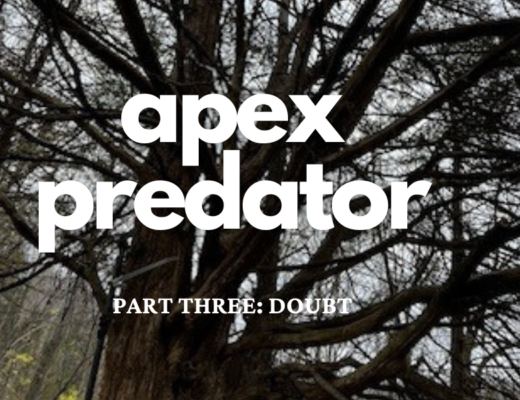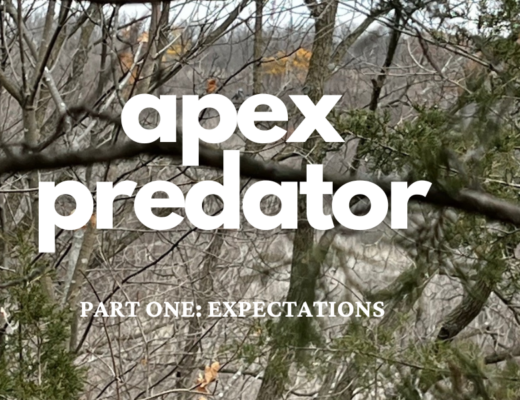My gardening career began in the early 90’s in the hot, humid, buggy, dirty, boring Library lawn of Benedictine College in Atchison, Kansas. My mom was the Head Librarian at the small, Catholic College and the Buildings and Grounds budget did not satisfy her expectation for her library’s aesthetic. Routinely, my parents would bring my brother and me to campus to maintain the flower beds, despite us airing our very legitimate concerns about the legality of child labor. We planted marigolds, geraniums, rose moss, other succulents, and more. Dusty Millers were fascinating and stressful, looking like a fern rolled in powdered sugar. My kid-brain could not comprehend that they were not actually covered in dust, so I treated them with great caution, determined not to be responsible for turning them into Plain Ol’ Millers.
Mom and Dad also rigorously maintained the numerous flower gardens in our yard at home. Planting, retaining, training, weeding, watering, and planning for the next year’s additions. Growing up in northeastern Kansas, gardens were for flowers–to increase curb appeal and make the neighbors think you really had your shit together. Impractical and inconvenient, if you asked me. In hindsight, the satisfaction of creating something beautiful, teaching your kids a skill, and peaceful time outdoors are the more likely and completely valid reasons my parents gardened as diligently as they did. With the shallow topsoil in our area, they did a damn good job of bringing color, dimension, and life to our home.
There are only three occasions on which I recall food being grown in our yard, primarily due to the aforementioned soil depth issue. First, when I was very young we grew red and yellow cherry tomatoes. My mom, forgetting that I was the child who didn’t like tomatoes, offered me a yellow one. I declined as politely as a Kindergartener could. She went about convincing me that there is no difference between a red tomato and a yellow tomato and that I should just be courageous and try it. I again politely declined. It was time for Anna to take matters into her own hands. Although “matters” was not my nickname, it may as well have been that day. She embraced me and as I protested, “I don’t like tomatooooes,” she popped the tiny yellow fruit into my whiny open mouth with swiftness paralleled only by other mothers-of-four-or-more.
As quickly as she popped it in, I spat it out, freed myself from her, and with what was surely a terrifying glare of betrayal, stated loudly and clearly once more that I do not like tomatoes. My mother recalls it differently; swearing under oath that my protest sounded more like “I don’t like the yelloooows”. Regardless, from that day forward tomatoes of any color held the top spot on my permanent shit list.
On the same ground where I spat out that tomato, I also found myself spitting watermelon seeds a few years later. We had just removed a giant ash tree from our yard, which happened to be situated just outside our screen door. The stump was ground out and several inches of fresh topsoil filled the hole. In the summer, my mom would cut up watermelon and I’d go stand at the farthest allowable distance to not get chastised for wearing my socks outside without shoes, and I’d spit out my watermelon seeds.
Watermelon seed-spitting is one of the lesser-known competitive sports, and as an elite competitor myself, I spent a lot of time refining my craft. I spit those seeds with force that came from my soul. I’d jump and spit, lean way back then whip my torso forward and spit, bullet spit, and experiment with different angles like I was trying to destroy the enemy castle with my watermelon seed. Yes, I did most of this alone in my backyard, narrating the entire debacle like an Olympic commentator in my head. Any passers-by or neighbors during this time were lucky to witness the random dancing and cheering, smiles and kisses blown for the invisible paparazzi, disappointed head shakes and ground stares when I misfired, and, of course, accepting my medal on the podium with my hand over my heart, wiping away invisible tears of pride for representing my country and being such an incredible role model to other young, female, watermelon seed spitters. The comedy and tragedy of unashamed neurodivergence.
Happily and to my extreme awe, my efforts did not go unrewarded. The seeds overwintered nicely and next year we had a little watermelon patch in that dead-tree soil. When I realized that I “made” those watermelons, I cared for them and protected them fiercely from my father’s roving lawn mower. I was rewarded with 5 sweet little melons. Handing over one of my precious watermelon babes to my aunt, I bubbled with joy and pride to share something that I grew that also made other people happy. I was the Watermelon Queen of Atchison, Kansas, and not a soul could convince me otherwise. Cue the National Anthem and invisible tears of pride-joy again.
The last item of produce we grew was Hungarian wax peppers. It was mostly an experiment by my mom and she didn’t imagine that anyone would ever eat them. Anna Cairney is a smart woman, but she really should have known better with two teenagers in the house, and a traveling commune of at least a dozen other highschoolers frequenting our home. My brother Luke is, how do you say… ah yes, a relentless instigator. I don’t know what all went down, in what order, who said what, or why it happened, but somehow Luke’s sweet, lovely girlfriend ended up eating one of these peppers (which are extremely hot), chugging milk, crying, and enduring pure misery for what seemed like an eternity. That relationship ended soon thereafter. Nobody blames the peppers.
The years passed, I went to college, graduated without purpose or direction, then started to figure out my own adult life here in Iowa. My first crack at homeownership and marriage was fleeting, and there was no gardening to speak of, except for growing two astonishing, brilliant little humans. Before the second one was fully ripe, the roots of my marriage were ripped out and chucked into the ditch. With the help of an amazing support system, my toddler and I were successfully transplanted into a safe, happy, cozy townhouse just weeks before her younger sister joined us.
While I was doing my best to navigate this new path forward, one of my “to-do’s” was to switch insurance companies, not for any sensible reason, I imagine the rates and coverages were fine. No, my agent at the time was a friend of my ex-husband. For my survival and sanity, I carefully and intentionally burned every bridge with every known ally to him that I would possibly have to face for any reason. An empowering decision for me at the time, although very difficult. I cut ties with people that I considered close friends and people for whom I held great fondness… because they were friends with him first and in my mind would always be “his” over mine. Too exhausted to live in a world that had space for both–I had to protect myself to protect my kids. It was all or nothing, so I chose nothing.
As painful as it was, that decision opened the door to relationships and opportunities in my life that I couldn’t have imagined. The seemingly innocuous decision to switch my insurance led me to Paul’s doorstep. When I laid eyes on him in that beige-walled office filled with plants begging to be pruned, seated handsomely beneath a photograph of a gentleman tongue-kissing a camel, I knew he was the man I would spend the rest of my life with.
When we had been dating about a year, Paul announced that we would be going to his mom’s house to plant the garden. Until we completed planting said 600 square foot garden, I hadn’t realized that my actual knowledge of gardening was limited to hella-good watermelon seed spitting and calculating the number of carrots in Farmer Bob’s garden in my 4th grade multiplication math workbook. Because I had proven to be a completely useless and incapable gardener by stepping off the 8-inch retaining wall directly into a hole and rolling my ankle, I mostly watched that day. What I observed was that it was hard, hot, and dirty. But it was also calculated, organized, and beautiful. Watching my steamy boyfriend (aptly nicknamed “The Paulinator” by my beloved intern, Sarah) plant a garden while I sat watching, helplessly injured on a blanket in the grass with an icepack on my ankle was Hallmark movie material, folks.
Through the growing season, we frequently drove to Wisconsin to help pull weeds, reorganize cucumber and squash vines, and harvest the vegetables that were ready. Paul’s mom said one day that the rhubarb was growing like crazy and needed to be cut so it would continue to grow. Punched by my nostalgia for my Grandma Marian’s famous Strawberry Rhubarb Jam, I volunteered to take some rhubarb home with us. Glad to hear that she wouldn’t have to find 1,000 uses for rhubarb on her own, Cindy handed me a knife, sent me out to the garden and told me to take as much as I’d like. As the door shut behind me, I walked in slow motion to the garden praying desperately to my Grandma Marian in heaven to guide me to the rhubarb, just like Inigo Montoya pleas to his father in The Princess Bride looking for the man in black when he’s in the Pit of Despair. Please Grandma, guide my knife. Don’t let me be found out here wandering around looking for the rhubarb like a little dummy.
I did not know what rhubarb looked like, I only knew it tasted like pure happiness when mixed with strawberries and copious amounts of sugar. After 30 seconds standing in the garden, looking around like a freakin’ idiot, I sensed the humiliation and embarrassment of not being able to identify a rhubarb plant, and did what any rational person would do–started plotting my getaway. I would put the knife on the retaining wall so they knew that if someone came up dead from a stabbing later that I couldn’t be blamed, then I would run through the corn field to the highway, hitchhike back to Dubuque, pack all my stuff, leave town, get a new phone number, change my name, and quietly live on the lam.
As I stared blankly ahead envisioning my future career as Janet the goat farmer in western Wyoming, my Paulinator appeared. He made a comment on how well the peppers in my sightline were doing, grabbed the knife from my hands, marched over to the rhubarb and started cutting. He held up a handful and said, “This enough?” I nodded, and he said, “Good, let’s go home.” Grandma Marian pulled through for me in a big way. She would have loved Paul, and she used rhubarb to tell me so that day.
Paul and I got married at noon on a Tuesday in October 2016 in the company of our parents and children at the canoe launch site in the Mines of Spain. A couple months later we bought a house in Dubuque county on an acre lot. Paul’s first order of business when the ground thawed was making a garden. We agreed beforehand that this was his passion project and that I could not be held accountable for the success or failure of said garden.
It thrived, and Paul’s enthusiasm was uncontainable. Grilling steaks for dinner one night, he asked me to go pick some green beans. We had a “bumper crop”, per his daily reports. Feeling confident in this task because I helped plant this garden after all, I knew where the green beans were, so I set off towards the plot. When I got there though, I saw the plants, but no beans. Pausing, I inventoried the rest of the plants to make sure I hadn’t somehow misidentified them. Tomatoes, onions, peas, peppers, dill, cucumbers, dead lettuce… yep, the only thing left was green beans. Dammit, it was happening again. Those were the plants, but where are the stupid beans?
Stomping back up the hill, I impetuously demanded Paul tell me exactly where he thought all these alleged green beans were because I was just down there and all I saw was the other shit we planted in the garden and green bean plants that were just a bunch of leaves with nothing growing out of them yet. Without skipping a beat or breaking his characteristic Paul helpfulness, he told me that there were a ton of green beans… under the leaves. Mimicking Emilia Clarke’s meme-worthy passive-aggressive Daenerys face, I found my way back to the garden and discovered that green beans did, in fact, grow under the leaves of the plant. That night I ate humble pie for dinner, with a side of green beans.
Each year since, I’ve gotten more involved with our garden. We grew cucamelons last year because I thought they were adorable. My youngest daughter loves potatoes, so she planted them with Paul this year and she eats baked potatoes once a week now. She’s 10 and provided her own food. How cool is that? All of the kids love our strawberries that we grow in a 30-foot raised bed. And this year, we even planted rhubarb of our own. Strawberry Rhubarb Jam will be plentiful next year with any luck.
The lessons I’ve learned each garden season have opened my eyes wider to my own privilege and fortune, which has in turn informed my work around food access in my community. Admittedly, my effort is a small drop in the ocean compared to the work of the organizations and passionate leaders for whom local food production and access to all is a sacred vocation.
This has been my personal journey with the soil. The metaphors for life, struggle, success, growth, neglect, love, and more are all there, all parallel to the stories we’ve lived. Peace exists in dirty hands and sunburned necks. There is joy, safety, health, fulfillment, and satisfaction in feeding yourself with the literal fruits of your labor. I’m grateful for the opportunity we have to involve our children in this experience so they, too, can experience the spectrum of emotions and life lessons associated with gardening. Despite the heat, humidity, bugs, dirt, and their silly protestations about the legality of child labor.





Great story Maddie loved it. And your kids will remember also.